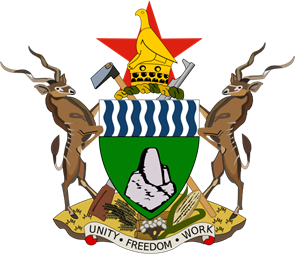Introduction
Agriculture remains the backbone of most developing countries, despite current and anticipated adverse impacts of climate change. Actually, the global demand for agricultural products is estimated to increase by approximately 60% to 70% by 2050, particularly in response to population growth (Silva, 2018). In Sub-Saharan Africa, a shift towards livestock vis-à-vis cropping is expected, as projected increases in temperature and variability in precipitation due to climate change may affect the length of the growing season. Currently, livestock products provide 17% of global kilocalorie consumption and 33% of global protein consumption (Rosegrant, Fernandez & Sinha, 2009). Between 2006 and 2050, it is anticipated that global meat production would have doubled from 258 to 455 million tonnes (Alexandratos & Bruinsma, 2012). On the other hand, crop production is expected to decrease. In Chivi, a semi-arid area in Zimbabwe, crop yield assessments from 1990-2019 show a declining trend, with maize being the most affected as compared to sorghum, pearl millet and finger millet (FEWS, 2019). However, despite better adaptation of animals to climate shocks than crops, regions where livestock is expected to contribute increasingly to food security are the regions identified as the most vulnerable to climate change (FAO, 2016). Global climate change is primarily caused by greenhouse gas (GHG) emissions that cause atmospheric warming (IPCC, 2014). The livestock sector has been documented to contribute 14.5% of these emissions (Grossi et al., 2019). Thus, understanding the nexus between livestock production and climate change is necessary for the sustainability of rural livelihoods.
Animal husbandry is considered the biggest land use that contributes significantly to global warming and climate change (Koneswaran & Nierenberg, 2008). Methane, in particular, is increasing at a rate of 1% per annum to the current status of being the second most important anthropogenic gas causing radiative forcing (Saunois et al., 2020). It is also approximately 28 times as potent as carbon dioxide (CO2) at trapping heat in the atmosphere (Borunda, 2019). Its sources include natural wetlands, biomass burning, and emissions along the value chain of forage production, feed processing and transportation, and enteric fermentation. Ruminants release between 250L to 500L of methane per day through enteric microbial fermentation (Johnson & Johnson, 1995). Contrariwise, climate change affects livestock production through declines in feed quality and quantity, increased prevalence of diseases and disease vectors, heat stress and biodiversity loss (Rojas-Downing et al., 2017). To improve the relationship between livestock production and climate change, we promote climate-smart agriculture which sustainably increases productivity, enhances resilience, reduces/removes greenhouse gases, and enhances achievement of national food security and development goals (FAO, 2013).


